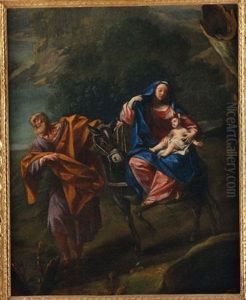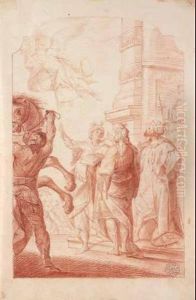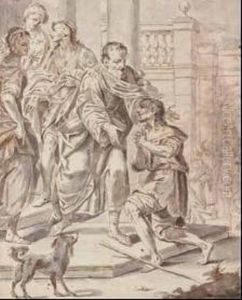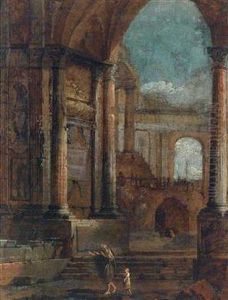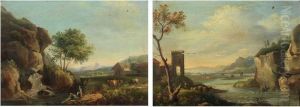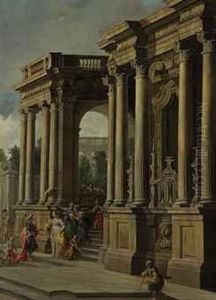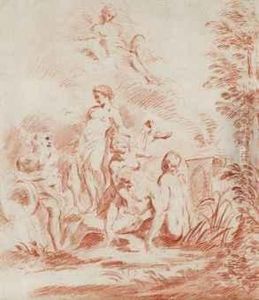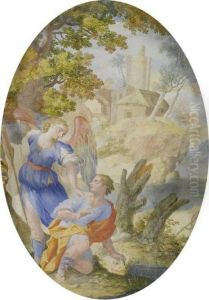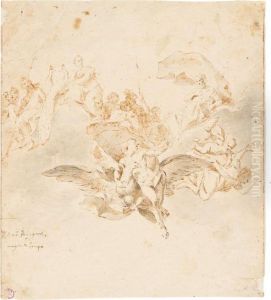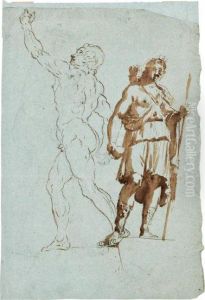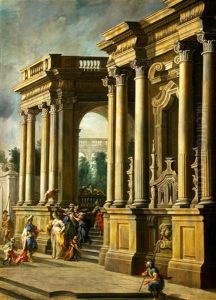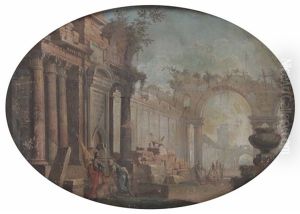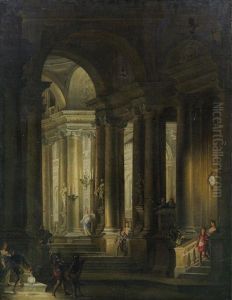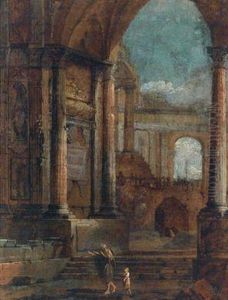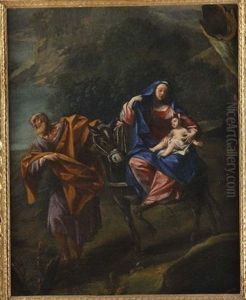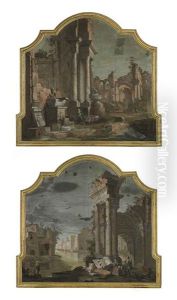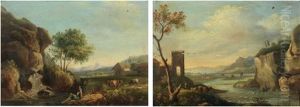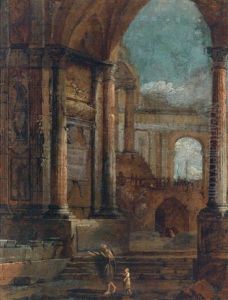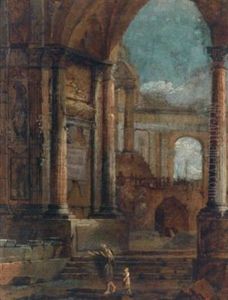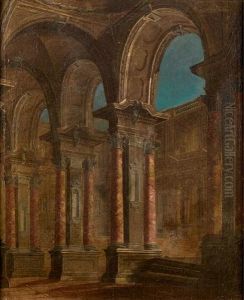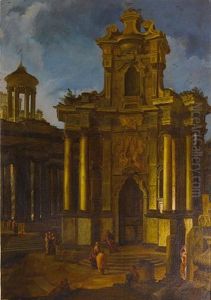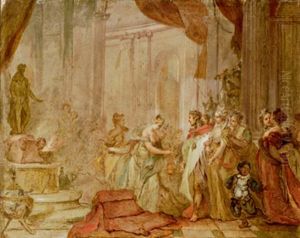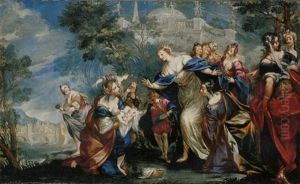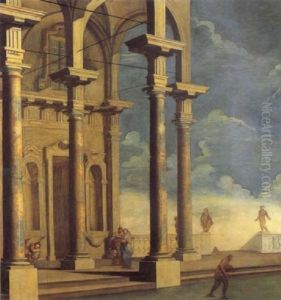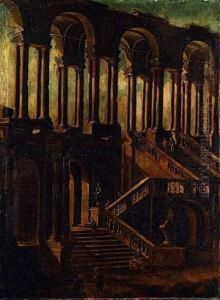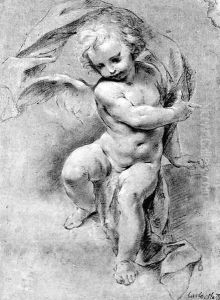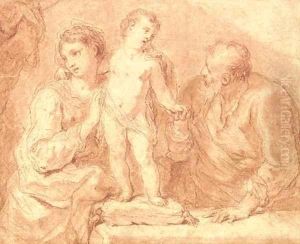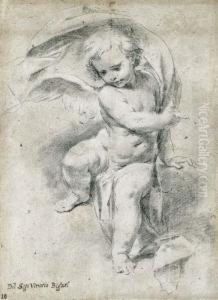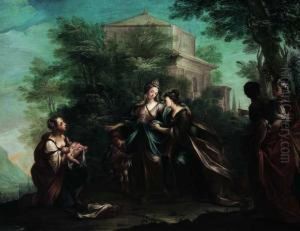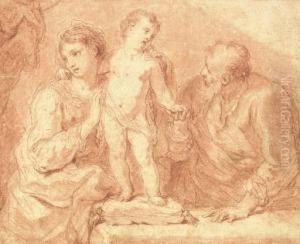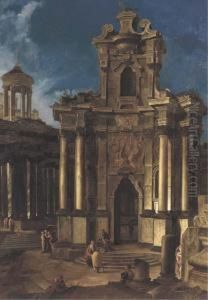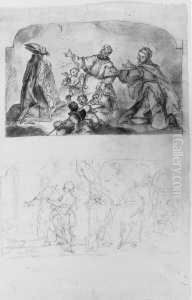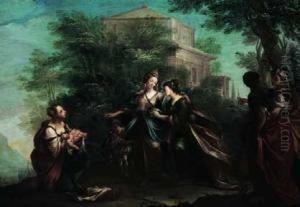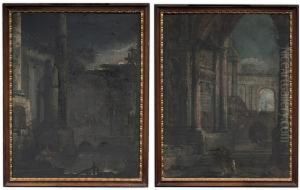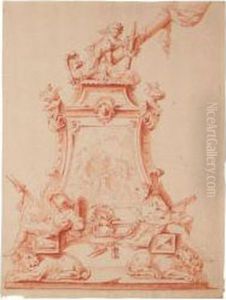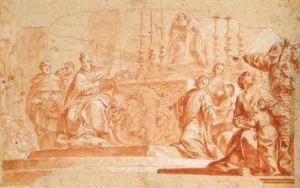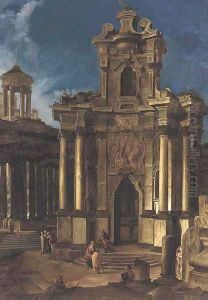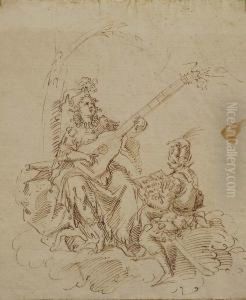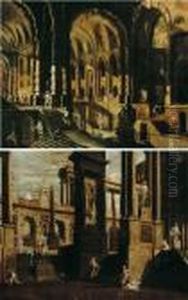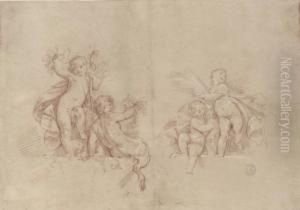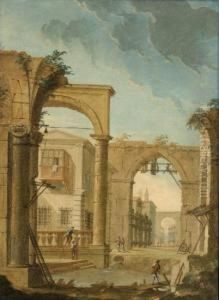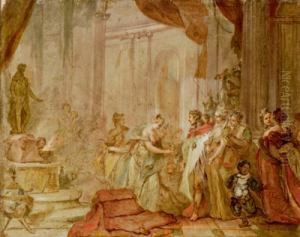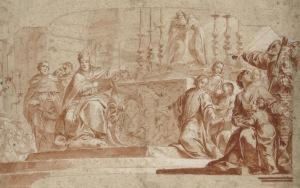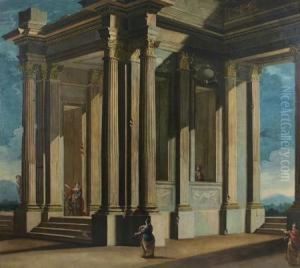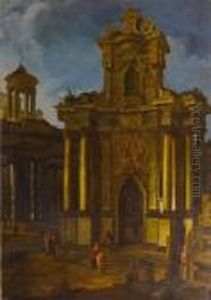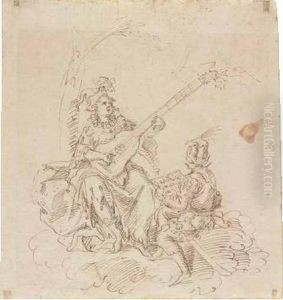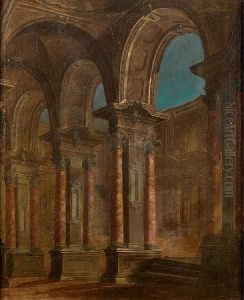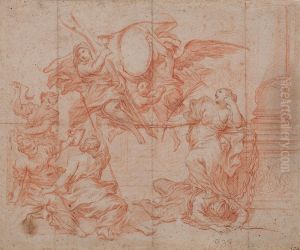Vittorio Maria Bigari Paintings
Vittorio Maria Bigari was an Italian painter of the late Baroque period, primarily active in Bologna, where he became known for his fresco decorations and altarpieces. Born in Bologna in 1692, Bigari was part of the vibrant art scene in the city, which was home to the renowned Accademia Clementina, where he studied and later taught. His artistic style was influenced by the grandeur and dynamism of Baroque art but also reflected the emerging Rococo sensibility that favored lighter colors, graceful figures, and ornate detailing.
Bigari's training at the Accademia Clementina was instrumental in his development as an artist. He was a pupil of influential painters such as Giovanni Gioseffo dal Sole and Donato Creti, who honed his skills and introduced him to the leading artistic circles of the time. As his reputation grew, Bigari was commissioned to work on various prestigious projects throughout Bologna and the surrounding regions. His work is characterized by dramatic compositions, a masterful use of chiaroscuro, and a rich palette that helped to convey the emotional intensity of his subjects.
Among his most notable works are the frescoes in the Palazzo Vizzani, the Palazzo Marescalchi, and the Palazzo Hercolani in Bologna. He also painted several significant altarpieces for local churches, such as the 'Madonna del Rosario' for the church of San Domenico. His religious paintings often depicted scenes from the life of Christ, the Virgin Mary, and the saints, imbued with a sense of devotion and spiritual fervor.
Bigari's legacy continued through his students, as he became a respected teacher at the Accademia Clementina. He trained a number of prominent artists who would carry on the traditions of Bolognese painting into the late 18th century. Despite the changing artistic tastes of the period, Bigari's work remained appreciated for its combination of Baroque drama and Rococo elegance.
Vittorio Maria Bigari died in Bologna in 1776, leaving behind a body of work that continues to be studied and admired for its contribution to the Italian Baroque and Rococo movements. His frescoes and paintings are considered important examples of the transition between these two styles, reflecting the evolution of European art during the 18th century.
